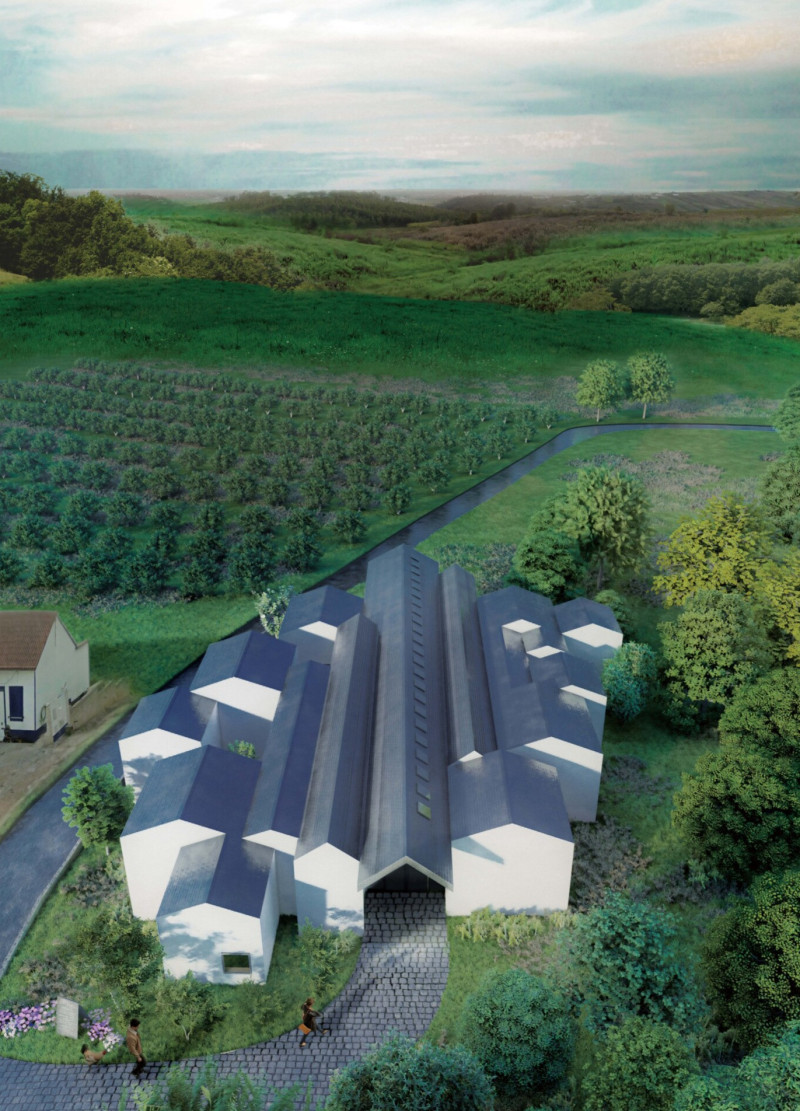5 key facts about this project
The design of this project is meticulously planned to reflect its surroundings. The layout features a series of interconnected buildings that foster both social interaction and individual experiences. Central to the project is a communal hub designed for various gatherings, enhancing the visitor experience while reinforcing the notion of community. The architectural design emphasizes the importance of shared spaces, such as the tasting room and multipurpose areas, while still providing guest accommodations that promote comfort and intimacy. This careful arrangement facilitates fluid movement through the site, encouraging visitors to engage with the agricultural landscape and each other.
Material selection plays a pivotal role in the Traverse project, with a deliberate focus on local resources. Wood, stucco, slate, glass, and metal are harmoniously integrated to create a warm, inviting atmosphere that resonates with the surrounding environment. The use of wood not only provides structural integrity but also contributes to the aesthetic warmth of the interiors. Stucco cladding on the exterior enhances thermal performance, ensuring comfortable conditions throughout the year while blending seamlessly with the natural palette of the landscape. The slate roofing serves both functional and decorative purposes, drawing from traditional materials that are characteristic of the region.
A standout feature of the Traverse design is its distinctive pitched roof, which creates visual interest and allows for varied ceiling heights within the interiors, enhancing the spatial experience. This design choice encourages natural light to penetrate deeper into the building, establishing a dynamic interplay of light and shadow throughout the day. Furthermore, the project incorporates elements designed for passive ventilation, allowing for a comfortable indoor climate that reduces reliance on mechanical cooling systems.
Sustainability is also a cornerstone of the architectural approach taken in the Traverse project. The integration of rainwater collection systems represents a commitment to environmental stewardship, while solar orientation considerations enhance energy efficiency. These sustainable practices contribute not only to the functional performance of the buildings but also align with broader global efforts toward responsible architecture.
Unique design approaches are evident throughout the Traverse project, particularly in its response to the context and community needs. The modular arrangement of structures reflects the traditional village layout, fostering a sense of belonging and authenticity. The design effectively navigates the balance between public and private spaces, promoting community interaction while still providing areas for reflection and solitude. Ultimately, the Traverse project demonstrates a cohesive vision that respects its setting and purpose, ensuring that visitors can engage with both the architecture and the landscape in meaningful ways.
For those interested in delving deeper into the architectural nuances of the Traverse project, exploring the architectural plans, sections, designs, and innovative ideas will provide further insights. Engaging with these elements will enhance understanding of the project's comprehensive approach to architecture, offering a well-rounded perspective on its design intentions and outcomes.


























